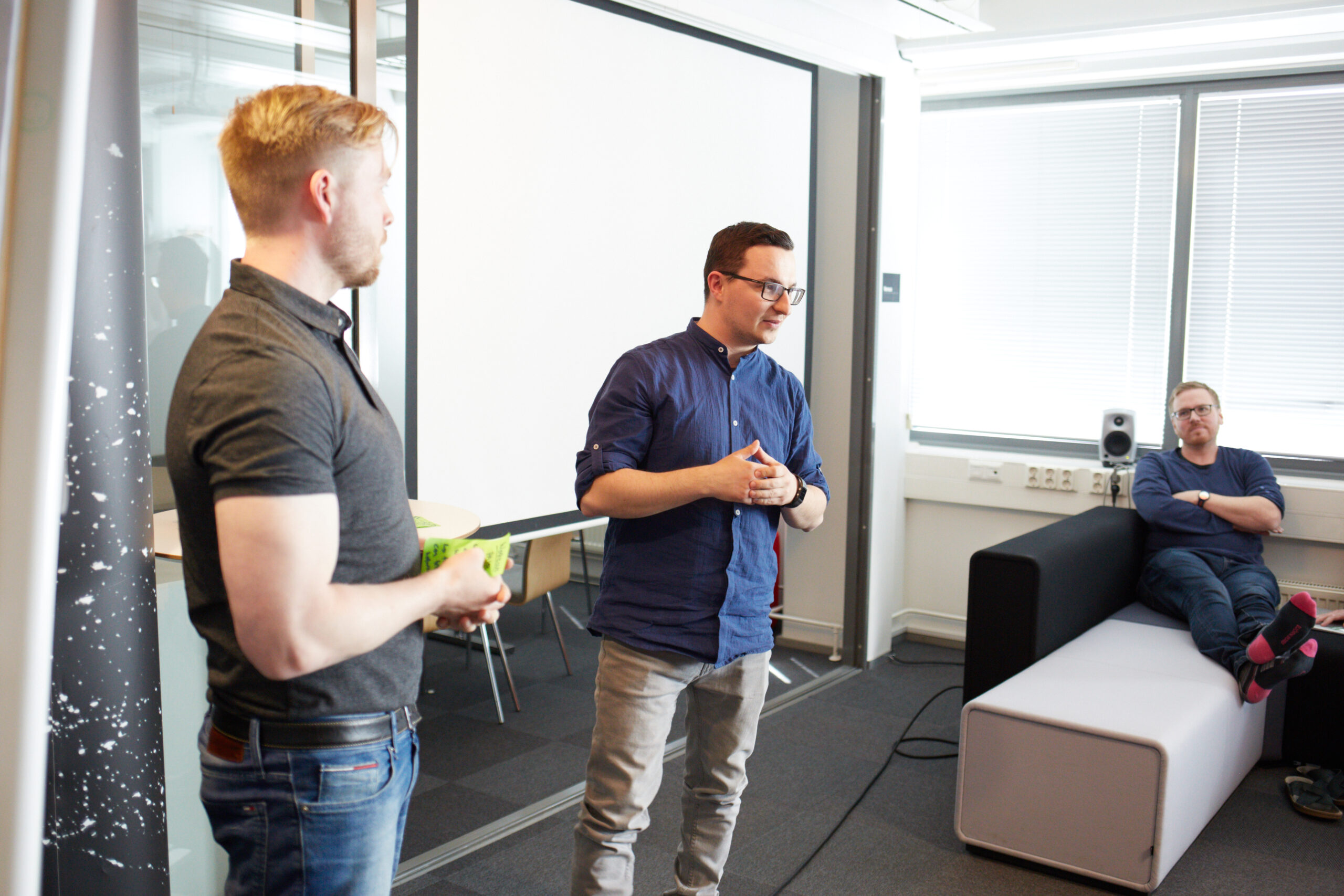Unlocking Your Inner Presenter: Tips for Confident and Engaging Presentations
Let’s begin by defining what we mean by a presentation. In this post, a presentation refers to any public performance in which an individual needs to speak, report, answer questions from the audience, or generally interact with others. It doesn’t have to be a big public event; it could be as simple as presenting a demo at a guild meeting or expressing one’s opinion at a team’s weekly meeting. It could even be a one-on-one conversation with a client, a job interview, a conference call, or a quick chat at the coffee machine. Essentially, a presentation is an opportunity to share one’s thoughts and make a point.
When it comes to public speaking, many people can relate to feeling nervous, unconfident, and worried about being judged. As for me, I was no exception. I used to be shy and anxious, always trying to find the right words and constantly fearing that people would think I sounded ridiculous or made a mistake.
During my Ph.D. studies, I was required to give conference speeches and defend my doctoral thesis. These experiences challenged me to face my fears and become a better presenter. Although I can’t say that I’m a fan of speaking in public, the satisfaction of sharing knowledge and helping people learn something new motivates me to continue working on my presentation skills.
In this article, we’ll approach presentations from two perspectives: the physical aspect, which refers to the slides or visual aids, and the theoretical aspect, which refers to the science of creating an effective presentation.
During my training session, I typically ask the audience to recall a speech they enjoyed and a moment when they felt fully engaged. We then create a list of commonalities among those speeches, which we revisit at the end of the training to assess their accuracy.
Let’s consider how you would know if a presentation isn’t going well.

Perhaps you were even present in the audience, struggling to stay awake or pay attention. Maybe you were the person checking his phone or conveying with your body language that this event is a waste of your time. This is the situation we want to avoid, and we will explore how to improve our presentation skills to avoid it.
So, whether you are a seasoned public speaker or a novice, there is always room for improvement when it comes to presentations. The following tips will help you create engaging and impactful presentations that will hold your audience’s attention.
Accept your fears
The first and most crucial step in improving your presentation skills is acknowledging and accepting your fears. This is a fundamental rule that applies to any personal development endeavor. t’s essential to understand that it’s natural to feel uncomfortable when standing in front of an audience. Instead of running away from your fears, be honest with yourself and make a list of them. Writing down your fears can help you put them into perspective, and you may realize that they aren’t as significant as you thought.
I would like you to take a minute now to think about your most profound fears and imagine yourself in a situation where you feel uncomfortable, such as giving training, speaking at a staff meeting, or presenting at a client’s Sprint meeting. Keep this scenario in your mind and apply everything I say to it mentally. Remember, acceptance is the first step towards overcoming your fears and becoming a confident presenter.
One of the most common fears is the fear of being judged by the audience. It is natural to worry about what others will think of you. However, it is important to remember that the audience is there to listen to you and your message, not to judge you. As Mark Twain once said, “Don’t worry, they don’t expect much.” Make this your mantra and remember that you are the expert in your topic.
To further ease your nerves, you can even start by acknowledging your nervousness to the audience. People appreciate honesty, and this will also help you eliminate the fear of being judged. Additionally, at Exove, there is no place for judgment. We believe in providing constructive feedback, not criticism.
If you’ve never spoken in public before and are afraid to do so, remember that stepping into the unknown is always daunting. But once you start speaking, you will find yourself relaxing. The experience you gain from that first step is the most valuable thing you can get in life. Don’t let your fear stop you from taking that first step – it might just surprise you.
Define Your Objective and Audience
It’s essential to know your audience and tailor your message accordingly. When you know who your audience is, you can adjust your language, tone, and style to make sure that your presentation resonates with them. For example, if you are giving a presentation to a group of experts in your field, you can use more technical terms and dive deeper into the details of your topic. On the other hand, if you are presenting to a general audience or to people outside of your field, you may need to simplify your language and use more relatable examples to make sure they understand your message.
Also, think about the format of your presentation. Would a demonstration or hands-on exercise be more effective than simply talking? Or would visual aids, such as slides, diagrams, or infographics, help to reinforce your message? Remember, the goal is to make your message clear and engaging to your audience.
Create a Clear Structure
In addition to understanding your audience, it’s important to have a clear and concise structure for your speech. Telling a story can be an effective way to deliver a clear message and engage your audience. To make the most of this technique, it’s important to plan your story carefully. Start with a strong opening that grabs your audience’s attention, such as a side story, joke, or attention-grabbing image on a slide. Then, present a problem that your story will address. In the middle of the story, offer a solution and explain how it solves the problem. At the end of the story, repeat your key message to ensure that it sticks in your audience’s minds. Make sure to use transitions to smoothly move between each point, and end with a strong conclusion that summarizes the main message and leaves a lasting impression on your audience.
Use Visual Aids
Slides are meant to support your presentation, not replace it. They are there to enhance your story, not distract from it. When creating your slides, keep in mind the following tips:
- Keep it simple: Use minimal text, clear graphics, and a simple design. Avoid using too many colors or fonts that may be difficult to read.
- Use visuals: A picture is worth a thousand words, so use images and graphics to help convey your message. Just make sure they are relevant and support what you are saying. Please, avoid using complicated graphs and tables in your slides. They usually have captions written in small text, or don’t have them at all. Presenting information in graphs, please, make sure it is easily understandable and readable. Or better, replace graphics with a catchy text, transmitting the main point of the graph.
- Pay attention to the color: It’s a good idea to stick to a simple color scheme, with no more than 2-3 main colors. You can use a color wheel to help you choose complementary colors that work well together. A high contrast between the foreground text and background color is important for legibility. Finally, be mindful of any color blindness your audience may have and make sure your color choices are accessible to everyone.
- Be consistent: Use the same design throughout the presentation. This will make it easier for the audience to follow along and help them stay focused.
- Use bullet points sparingly: If you must use bullet points, limit them to a few key points. Long lists of bullet points are hard to read and will bore your audience.
Remember, the slides are just a tool to help you deliver your message. They should enhance your presentation, not take away from it.
Practice, Practice, Practice
Additionally, practice, practice, practice! Practice your speech several times in front of a mirror, to your colleagues, or friends. Use a timer to make sure you are within the time limit. You can also record yourself and watch the recording to see what you can improve. By doing so, you can eliminate mistakes, get familiar with the content, and become more confident in delivering your presentation. Remember, practice makes perfect!
Engage Your Audience
Engaging your audience is a key factor in delivering a successful presentation. Encourage them to ask questions, share their thoughts, and participate in the discussion. Use humor, anecdotes, or real-life examples to make your presentation more relatable and memorable.
To make your presentation even more effective, try adding a personal touch. Choose a representative individual to follow in your story instead of a group. This will create a personal connection between you and your audience and foster trust. Don’t be afraid to show vulnerability or flaws in your personal story, as this will build rapport with your audience. By following these storytelling tips, you can make your presentations more relatable and memorable for your audience.
Use pauses effectively. Pauses can be powerful tools in your presentation. They can help you emphasize a point, give your audience a moment to absorb information, and even help you calm down if you’re feeling nervous. Use them wisely and avoid filling every second with words.
Body language
Body language is also an important aspect of presenting. It can convey confidence, enthusiasm, and engagement, or it can undermine your message if not used effectively.
Maintain an open and relaxed posture, avoid crossing your arms or legs, as this can convey defensiveness or disinterest. Use hand gestures purposefully to emphasize important points or to show enthusiasm. However, be careful not to overdo it and distract from your message.
Also, pay attention to your facial expressions. Smile when appropriate and avoid frowning or looking bored or disinterested. Your facial expressions can convey a lot about your attitude towards your topic and your audience, so make sure to project positivity and interest.
Use movement on stage intentionally. Move around to engage different parts of the audience, but don’t pace nervously or wander aimlessly. Use movement to reinforce your points, for example, by stepping forward to emphasize a key point or backing away to show a change in direction.
In short, your body language should be aligned with your message and your overall goals for the presentation. With the right body language, you can help connect with your audience and convey confidence and credibility.
Be Authentic
Finally, be yourself. Authenticity is key to building a connection with your audience. Don’t try to be someone you’re not. Speak from the heart, and your audience will appreciate your honesty and sincerity.
Overall, the key to presenting yourself well is to be confident, engaging, and authentic. If you’ve prepared well and are passionate about your topic, your audience will respond positively.
Finish Strong
Your conclusion should summarize your main points and leave a lasting impression on your audience. Use a memorable quote, a call to action, or a powerful visual aid to reinforce your message and leave your listeners with a sense of inspiration or motivation.
Finally, remember to thank your audience at the end of your presentation and be open to questions. Don’t be afraid to admit if you don’t know the answer to a question, but be willing to follow up with the person later if you can.
By focusing on these three key areas – content, design, and delivery – you can create a presentation that effectively communicates your message, engages your audience, and inspires action. Remember to define your objective and audience, create a clear structure, use visual aids, practice, engage your audience, and finish strong. With a little practice and preparation, you can become a confident and skilled presenter who captivates and inspires your audience!
Share on social media:



